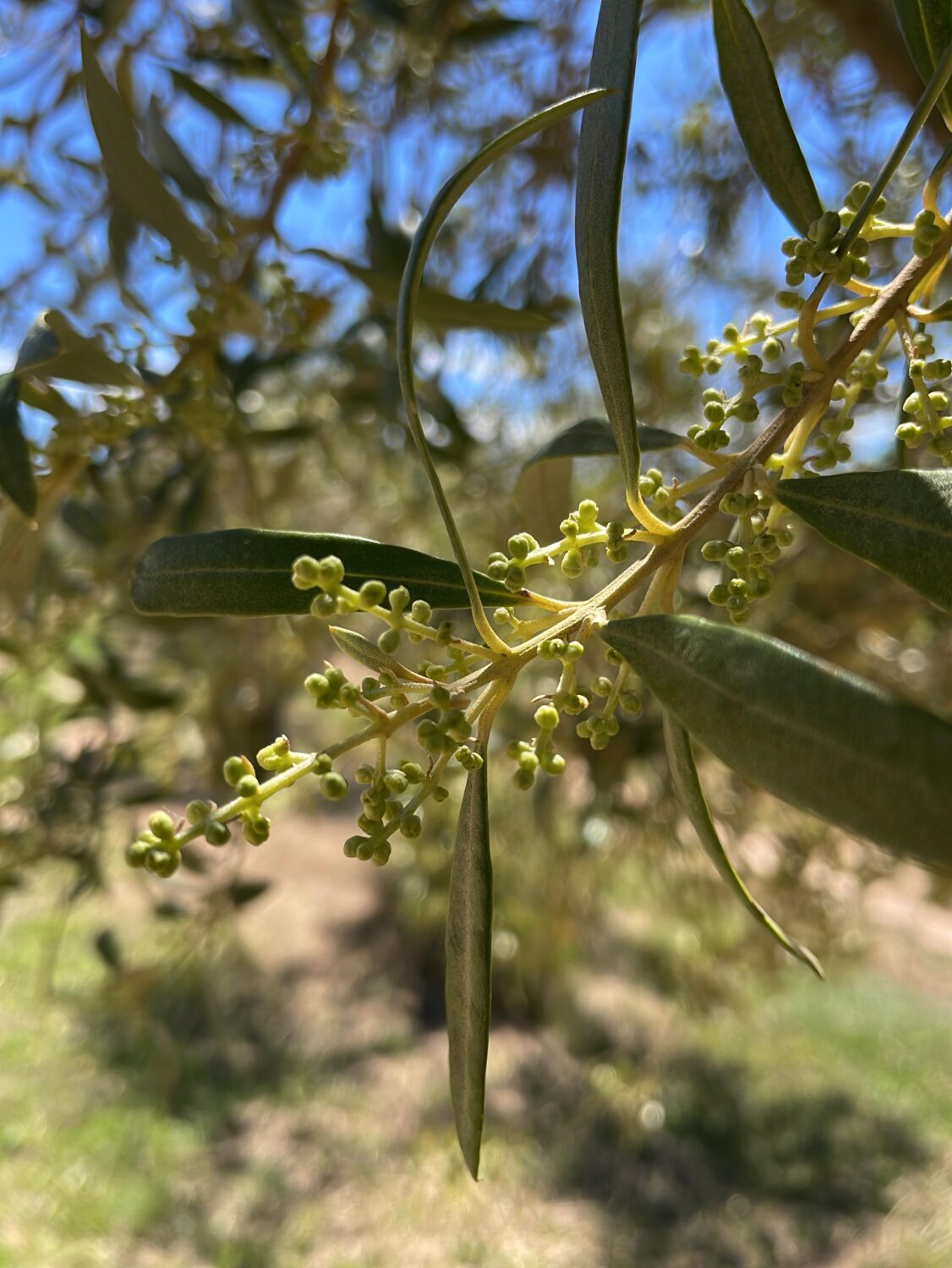Also known as olive tree flowering, this captivating process usually takes place between May and June. Currently, it’s occurring in the PONS estates when the daily average temperature surpasses 18°C. However, this period can vary depending on climate conditions and the specific cultivation zone.
Olive flowers emerge from the previous year’s buds. To be productive, these buds need to go through a vegetative rest phase, which occurs when average temperatures are below 10°C.
In Spain, olive flowers go by various names depending on the geographical region, such as “rapa,” “trama,” “muestra,” and “esquimo.” Olive trees have both self-fertile and self-sterile varieties. Self-fertile olive varieties have better fruit-setting capacity and are self-sufficient.
During the flowering period, olive trees release a significant amount of pollen into the atmosphere. Wind plays a crucial role in transporting this pollen and is essential for olive pollination. However, if intense and continuous rain occurs during olive flowering, it can wash away the pollen and reduce the harvest.

On the other hand, excessively high temperatures during flowering decrease olive pollen fertility, negatively impacting fruit setting. In contrast, cool and humid air facilitates pollen transfer, maintaining its fertilization capacity for a longer time, resulting in a higher yield from the olive trees.
Additionally, having sufficient soil moisture reserves also contributes to better fruit setting in olives.
During olive flowering, the antophagous generation of the olive moth (prays) may damage some flowers. However, when flowering is abundant and a bountiful harvest is expected, these damages are negligible. In PONS, we carry out this care in a sustainable and ecological manner


 Català
Català